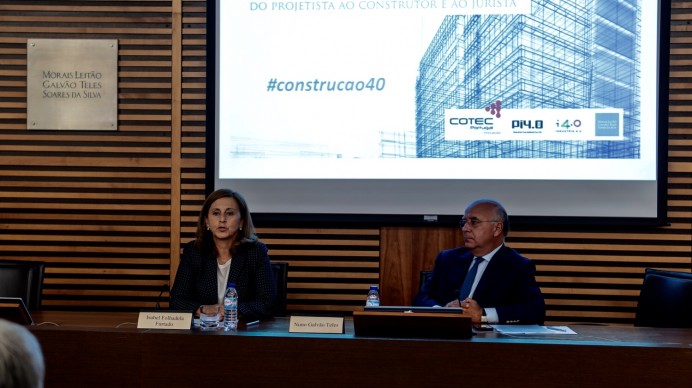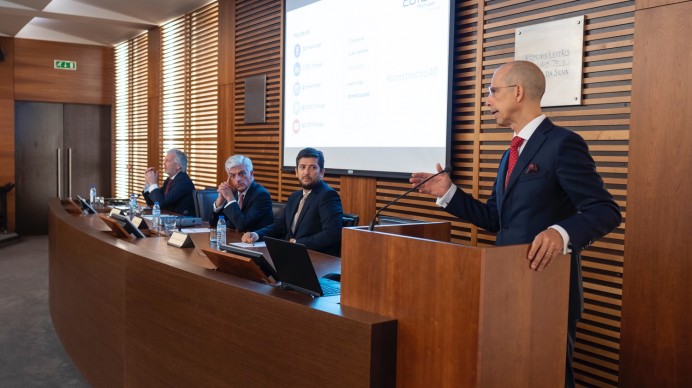“Construction 4.0: from the designer to the builder and to the jurist ”was the theme of the conference held this Tuesday, September 18, 2018, by Morais Leitão, Galvão Teles, Soares da Silva & Associados (MLGTS) and by COTEC Portugal. Building Information Modelling (BIM) for the construction industry was the main topic addressed.
This methodology is much more than a technological solution for 3D construction. It arises in the context of digitalization and focuses on the communication of information between stakeholders, including the areas of design, engineering, construction and maintenance of structures.
The president of COTEC, Isabel Furtado, pointed out the advantages of using BIM “in reducing costs, execution time or environmental impact”, which cannot be ignored. In her intervention, the director stressed that the global vertical construction and infrastructure market should adopt the BIM methodology in the next decade, an initiative that, it is anticipated, could represent savings of between 15% to 25%
Nuno Peres Alves, shareholder/ partner of MLGTS, said that “the legal paradigm of construction contracts, namely in public works contracts, changes with the BIM methodology, if we want to capture all the value that this brings to the construction sector” . In fact, the aforementioned methodology “has a huge potential to reduce the number of legal disputes related to errors or omissions and ‘extra work’, but it will also serve as a fundamental means of proof, either in the execution phase or in a litigation scenario”, summarized the lawyer. Nuno Peres Alves recalls that “a fragmented view of construction contracts – public or private – should be replaced by an integrated view of all phases, with an emphasis on the use of new contractual models and the careful and prudent review of the law and regulatory rules” .



Through BIM modelling it is possible to plan the resources (human and material) of the works, ensuring a speed of execution that is otherwise impossible. The methodology enables cost-saving in the execution of the work, to increase economies of scale, for example in the acquisition of raw materials, among other advantages such as the possibility of collaboration between companies.
This collaboration can happen both in the project and in the execution phase of the contract, clearly facilitating the work in this area. Other advantages of the methodology are associated with the possibility of eliminating errors and omissions and with a much greater traceability of the work’s history.
In other geographies, the methodology has been applied for more than a decade, with a mandatory nature (Norway and Finland are examples of this). Since 2016, in the United Kingdom, all projects involving the acquisition by Central Government have been carried out in this way. This situation will be replicated in Spain later this year and in Germany in 2020.
Here the methodology is still not commonly applied. The State, as the first contracting authority for structures, should establish itself as an agent of change, setting an example by using BIM in procurement procedures both in the design and execution phases, with greater quality of work deriving benefits from greater transparency and lower costs. In short, the BIM methodology is an opportunity for the construction industry and for all its professionals.
However, the warning remains: “the construction industry in Portugal is not yet prepared for this new era of construction”, as is confirmed in the COTEC BIM report, coordinated by António Aguiar Costa, and reinforced by the president of COTEC this Tuesday . “This is a challenge that will require the mobilization of the national sector for an integrated and coordinated approach”.

